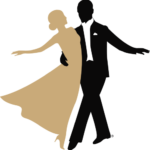Are Dance Shoes Different from Regular Shoes?
Dance shoes are in a league of their own when it comes to design! Unlike regular shoes, which usually have rubber soles for traction, ballroom dance shoes have thin suede soles that let you glide effortlessly with your partner while keeping just the right amount of grip on the dance floor. Plus, they’re super flexible, allowing the shoe to move naturally with your foot to really showcase your footwork.
From sleek leather and satin fabrics to secure heel attachments and flexible construction, each dance shoe is designed to meet the unique needs of dancers. With soft linings for comfort and wicking moisture, cushioned insoles for shock absorption, and suede outsoles for just the right grip, dance shoes offer everything you need to glide, spin, and turn with confidence on the dance floor.

